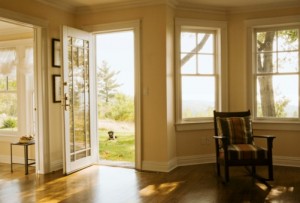Three Hidden Household Risks for Indoor Air Contamination

1. Pre-existing Lead-Based Paints
Lead-based paints were formally banned in 1978, but about half the homes built before this time still contain older paint that can pose a serious risk for lead poisoning. Lead can be released into the home’s circulating air during sanding and scraping, or when surfaces treated with lead paints rub against each other–as when opening windows or doors. Those living in older homes should take the following precautions, particularly families with young children:
- Have painted surfaces tested by a professional agency through XRF or paint-chip analysis to identify lead presence.
- Keep floors, windows, and all painted surfaces clean and in good repair.
- Where lead-based paints do exist and are in good condition, avoid activities that will disrupt surfaces and release particulates.
2. Interior Mold
Ideally, your home should have a relative humidity of about 30 to 50%. Very low humidity can lead to lung, nose, and eye irritation and potentially increase the risk of infections. However, high humidity in the home can also create the perfect environment for mold and mildew to take hold, leading to potentially serious respiratory issues. A few general tips for preventing interior molds include:
- Regularly disinfect humidifying and dehumidifying equipment.
- Replace or clean bathroom exhaust filters frequently.
- Check downspouts and gutters to ensure good drainage around the home.
- Use a diluted bleach mixture to treat affected areas and destroy mold spores.
3. Radon and Carbon Monoxide
These odorless, colorless gases can lead to a variety of health issues. Carbon monoxide (CO) is particularly dangerous indoors, where levels can rise quickly to fatal levels. In addition to kerosene, wood, and propane heaters, faulty gas ranges, ovens, and home furnaces are often the source of excess CO. Radon gas typically finds its way into the home from the soil and rock beneath foundations, and is the leading cause of lung cancer among nonsmokers. The following guidelines can help to minimize the risk of unhealthy exposure:
- Inspect heating equipment and other fuel-burning systems frequently.
- Install a CO alarm on each level of your home; replace every five years.
- Perform a long-term radon test to determine levels in the home. A presence of 2 to 4 picocuries per liter or higher may require professional treatment.
If you are concerned that you may have issues with mold, lead contamination, or another source of indoor air pollution, the team at H2 Environmental can help with a full range of inspection, monitoring, and treatment options.










